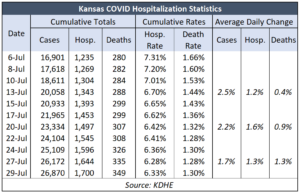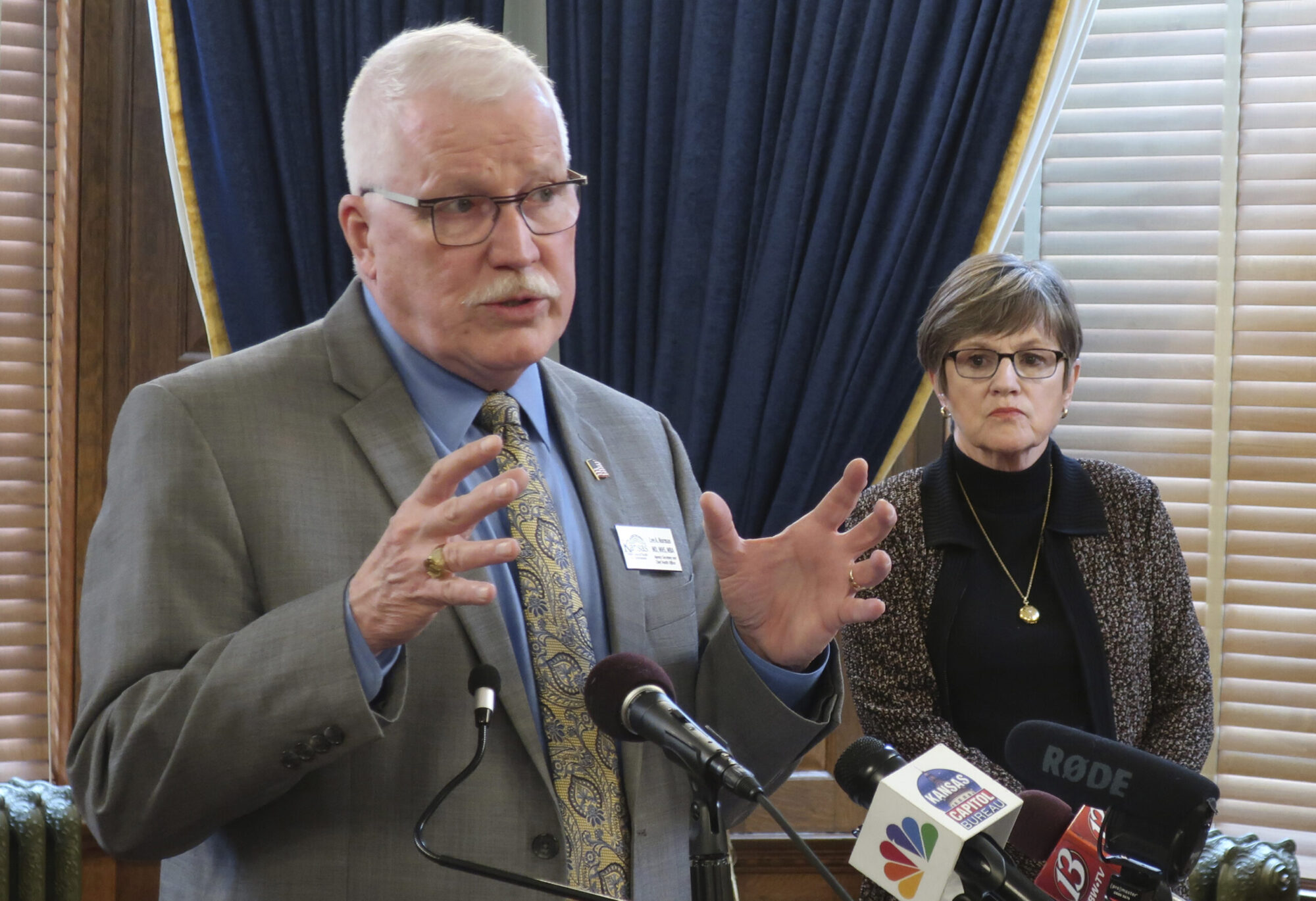It may not have been intentional, but a July 29 story in the Wichita Eagle misrepresented the trend of COVID-related hospitalizations in Kansas. The story said hospitalizations and deaths were outpacing the increase in new cases, but they only reported the change over two days; the weekly and cumulative changes throughout July, however, are fortunately just the opposite.
 The average daily increase in new cases for the seven days ended July 27 was 1.7%, but hospitalizations and deaths only went up 1.3%. Between July 13 and July 20, cases averaged a 2.2% daily increase, but hospitalizations only increased by 1.6% and deaths by 0.9%. Hospitalizations only increased by an average of 1.2% between July 6 and July 13 and deaths went up just 0.4%, while new cases increased by 2.5%.
The average daily increase in new cases for the seven days ended July 27 was 1.7%, but hospitalizations and deaths only went up 1.3%. Between July 13 and July 20, cases averaged a 2.2% daily increase, but hospitalizations only increased by 1.6% and deaths by 0.9%. Hospitalizations only increased by an average of 1.2% between July 6 and July 13 and deaths went up just 0.4%, while new cases increased by 2.5%.
The cumulative hospitalization rate (total hospitalizations divided by total reported cases) fell from 7.31% on July 6 to 6.33% on July 29, and the mortality rate dropped from 1.66% to 1.3%. Even more encouraging, only 4.7% of the 9,969 new cases between July 6 and July 29 required hospitalization, and the mortality rate (new deaths divided by new cases) was just 0.7%. Notwithstanding the possible impact of a time lag for pre-July 6 cases on deaths and hospitalizations, these are very positive signs that media and many government officials aren’t sharing.
Fear and obfuscation can be avoided
Part of the blame for unnecessarily spreading fear lies with the Kansas Department of Health and Environment, which refused Open Records requests for such information over time. Governor Kelly also ignored a request for more transparency submitted by House Majority Leader Dan Hawkins (R-Wichita).
The Sentinel and our parent company, Kansas Policy Institute, began tracking the KDHE data in the above table upon learning that KDHE refused to provide the historic data people need to reach their own informed opinions.
The Wichita Eagle in particular and media in general are also to blame. Reporters and news editors know that two days do not constitute a trend, and they also know that many people are very frightened by COVID.
But reporters tell us too many media owners and upper management judge their work based on the number of online ‘clicks’ more so than basic journalistic principles. When that happens, truth and perspective are the victims, along with the readers and viewers who are unnecessarily frightened.



